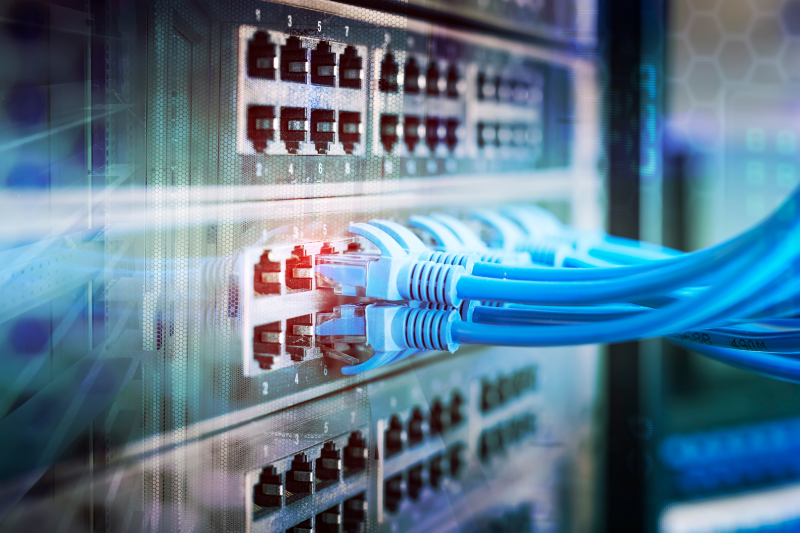Home


Resource Center

When it comes to the idea of 5G replacing fiber internet connections, there’s a lot to get excited about. On paper, 5G promises bandwidth and latency that rivals fiber connections. On top of that, it promises vastly improved availability and the ability to support hundreds or thousands of devices without performance loss. However, there are plenty of technological and economical challenges that lie ahead.
To answer the question of whether 5G can replace fiber internet, we need to look at how both network technologies work independently — as well as together.
A Look at 5G

It’s worth taking the time to understand the underlying technologies that power 5G. There are actually three distinct technological implementations for 5G. While all are accepted as 5G, each offers different capabilities. All major carriers have pledged to use multiple technologies to offset disparities between them.
mmWave 5G
The 5G technology that receives the most hype is mmWave. This is the technology that’s able to match fiber internet speeds with well over 1Gbps speeds in ideal conditions.
mmWave uses much higher transmission frequencies, at up to 1GHz of bandwidth, than traditional cellular signal or even other 5G technologies. This is precisely what enables it to transmit data at incredible speed. That said, these higher frequencies aren’t capable of traveling long distances. They also have a difficult time penetrating the simplest of objects, including walls, glass, and foliage. That’s a substantial barrier for most businesses, which may be located in buildings made of metal, concrete, and other robust materials.
Carriers are exploring ways to improve mmWave, including using a large number of mmWave repeaters to help densify the carrier network.
Low-band 5G
Low-band 5G is the implementation used by carriers to provide nationwide coverage. This technology is actually an aggregation of multiple 4G LTE channels. Since low-band 5G piggy-backs off of 4G, the coverage is better. All WilsonPro 5G repeaters support low band carrier aggregation 5G.
Mid-band 5G
Mid-band sits in the middle of low-band and mmWave in terms of coverage and speed. The mid-band spectrum is promising — speeds are far faster than that of 4G LTE, even closing in on 1Gbps in the right circumstances. Mid-band spectrum waves are far more reliable and have a greater range.
Infrastructure for mid-band or C-band services is currently being developed and deployed by network operators. Mid-band 5G balances the need for fast data and more connected devices with longer range. C-band is truly the future of 5G for most use cases, which is why Wilson is developing an in-building, C-band cellular repeater for carrier and commercial use.
5G Is a Team Effort

Keep in mind that each individual band of spectrum is circumstantially better than the other. Each carrier plans to utilize all three to provide comprehensive coverage that covers every possible scenario.
This is an important consideration, since the technology with the lowest range is the only one that can truly match fiber internet speeds, with 1Gbps downloads and <10ms millisecond latencies.
Fiber and the Last Mile

Fiber has actually been around since the 1970s. As a networking technology, it revolutionized the telecommunications industry and paved the way for the internet. Every piece of information transmitted over the web moves through some portion of the millions of miles of fiber that’s distributed across the globe.
Due to its cost and labor-intensive deployment, direct fiber internet connections weren’t available to most people. Instead, copper-based technologies were used to bridge what’s commonly called “the last mile.” This refers to the distance between the closest fiber-connected telecom office and the location where connectivity is needed.
Unfortunately, copper isn’t all that efficient. It can only carry a gigabit signal about 300 feet before it starts degrading. While it’s certainly come a long way since the days of dial-up, even the fastest cable and DSL connections are no match for fiber.
In the last few years, things have improved enough that we’re seeing an increase in fiber deployments over the last mile, especially in larger metropolitan areas and to major businesses. Even still, only about a third of the United States has access to it. That number is expected to grow to 50% by 2025.
The last mile bottleneck is one of the major problems carriers are hoping to address with 5G. If they can make good on the standards set forth, we may well see a future where businesses rely on 5G for the internet. Verizon, for example, already offers 5G internet service in 82 cities, placing 5G at the forefront to bridge the gap between fiber backbones and the millions of people without gigabit internet.
A Perfect Scenario for Cellular Repeaters

5G may not entirely solve the last mile problem. Because of mmWave limitations, there are going to be several instances where commercial spaces don’t have complete coverage.
Even 4G signals can have problems with certain types of architecture. Eco-friendly construction practices, such as those that use RF-blocking materials, can wreak havoc on the strongest cell signal. What good is gigabit internet speed if you only have it in the parking lot of your building?
One promising solution is a cellular repeater. Repeaters have been on the market for years, helping retailers, hospitals, college campuses, and other facilities improve signal strength on their campuses and in their offices. Given the unique challenges of 5G, repeaters will prove to be an integral part of deployments by helping bring 5G network signals to cellular devices indoors. Where 5G is focused on the last mile, a repeater will be perfect for those last few feet.
Get Tomorrow’s Signal Today With WilsonPro

At WilsonPro, we engineer powerful cellular repeaters to provide enterprise businesses with a signal where they need it most. We provide solutions that work across all 5G spectrums, whether it’s low-band, mid-band, or blazing fast mmWave:
- Enterprise 4300: Operates on the 700, 850, 1700/2100, and 1900 MHz frequency bands of 5G.
- Enterprise 1300: Operates on the 700, 850, 1700/2100, and 1900 MHz frequency bands of 5G.
- Pro710i: Operates on the 600 MHz frequency band of 5G.
- Network 257: Operates on the 28 GHz frequency band of 5G.
In addition to these solutions, we are also engineering a cellular repeater solution to support mid-band 5G. As network operators combine all three spectrum types of 5G, WilsonPro has repeater technology to support each of them.
If you’re ready to solve your in-building connectivity problems or want to learn more about how we’re innovating 5G technology, get in touch with us today.

